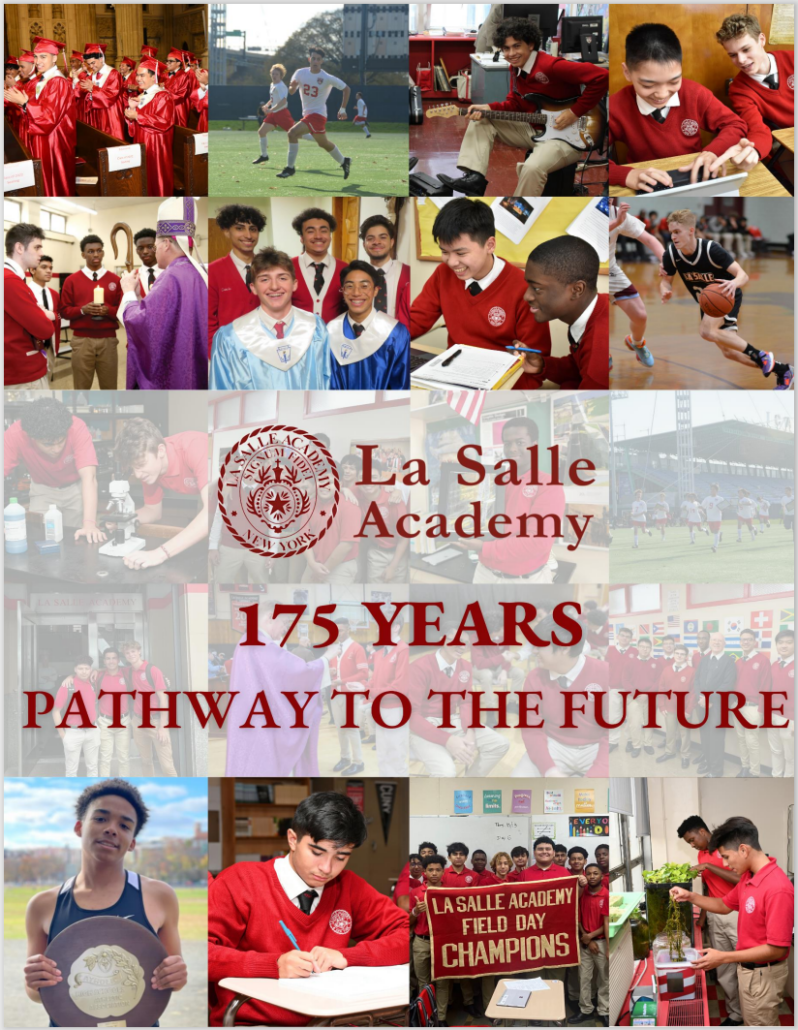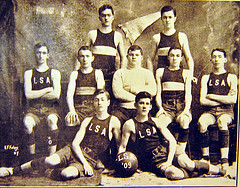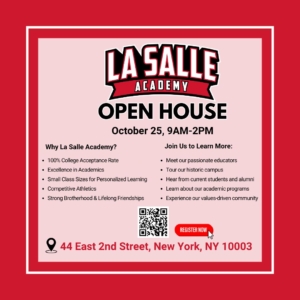OUR MISSON
We create experiences of community within the school and encourage each student to develop his gifts and talents for his own growth and to engage in the caring service of others.
La Salle Academy is a rigorous all-male private, independent college preparatory Catholic high school conducted in the Lasallian tradition. We educate students of diverse cultural and socioeconomic backgrounds and offer opportunities for them to fulfill their potential. We provide a nurturing environment, which fosters spiritual, moral, intellectual, emotional, and physical growth. We challenge young men to be successful students, foster a commitment to service, and prepare our graduates to be life-long learners and caring citizens of the world.
OUR VISION
La Salle Academy is known for our unique Lasallian pedagogy, educating students to become men of faith who possess a global conscience and who demonstrate an ongoing appreciation of life-long learning.
We will strive to model ourselves as a loving community of service, especially those most in need, entrusted to us by parents and guardians, providing students with a human and Christian education. We will faithfully respond to our vocation, gifted and sent as ambassadors by Jesus Christ, and we will embrace a vision grounded in our Lasallian Catholic heritage.
Strategic Plan: Our Pathway to the Future!
Our History
La Salle Academy had its first beginnings in 1848, when four De La Salle Christian Brothers arrived in New York from France and established Saint Vincent’s School on Canal Street. St. Vincent’s relocated to Second Street in 1856, and in 1887 changed its name to La Salle Academy. In 1936, the Academy erected the large five-story school building that stands today.
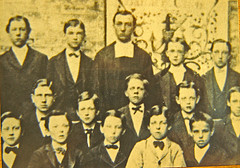
Brother Virgil and His Class, 1872
The 1800s
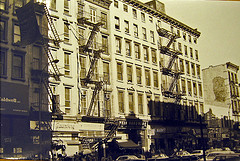
First Site of School Canal Street, 1848
In 1848, Bishop John Hughes invited the Brothers of the Christian Schools in France to send Brothers to New York. Four Brothers arrived in the Lower East Side on July 26, 1848, and wasted little time in opening their first school for 90 boys in a church basement at 26 Canal Street.
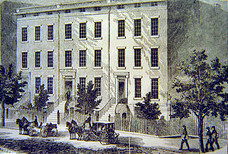
44 Second Street, 1856
In 1856, the physical shift from Canal Street to Second Street occurred. The number of Brothers had grown from 4 to 26 at that point.Together they purchased a lot on Second Street formerly inhabited by American novelist Washington Irving. They would soon build a five-story building for the sum of $8,000.
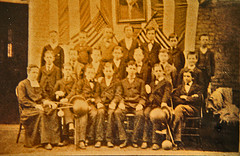
La Salle Academy Class, 1880
In 1886, a young man by the name of Patrick Hayes graduated from La Salle, and in 1887 Patrick was followed by George Mundelein. Both of these men would later become Cardinals of the Church. In 1896, the New York Board of Regents granted La Salle Academy a school charter.
The 1900s
The Lower East Side continued its rapid growth and changing population with a steady stream of immigrants seeking opportunity in the New World. The student population totaled 98 by 1906 and many students received academic Regents diplomas from New York State. However, by 1916 there were only 12 academic diplomas awarded, and the decision was made to admit students to commercial courses only.
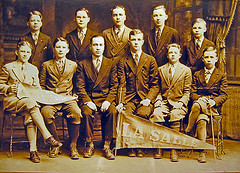
City Champions, Business Class, 1920
By 1925, enrollment guidelines had changed and the Academy enrolled 300 boys. Enrollment continued to bloom and reached 700 in 1937 during the height of the Depression. The face of the Academy changed after World War II had ended and enrollment boomed. The ethnic composition of both the Lower East Side and the student body was also changing. However, despite the rapid changing of New York City and the nation, the educational mission of the Christian Brothers never lost focus. In order to celebrate 100 years of academic excellence and an enrollment of 900 students, a dinner gala was held at the Old Metropolitan Opera House in 1948. La Salle would soon reach its highest registration in history, approximately 950 students.
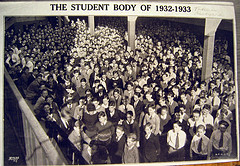
Student Body, 1932
Moskowitz and Lupowitz Restaurant, on the corner of 2nd Street and 2nd Avenue, was purchased in 1966 and until 2008 had served as the school annex, providing additional classrooms and office space.
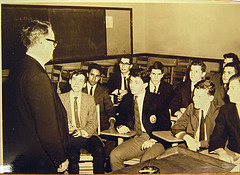
Changing Times at La Salle, 1960
In the early 1970s, La Salle ushered in the computer age for the secondary schools of the Archdiocese of New York with the La Salle Academy Computer Project. Although primitive by today’s standards, the ability to call in to La Salle Academy’s mainframe and “timeshare” was a revolutionary step in technological access. The decline of the number of Christian Brothers that began in the late 60’s led to the incorporation of many lay teachers into the La Salle Academy educational community. Their diversity of personal and academic talents and backgrounds has enriched the educational experience of the students. The contributions of the lay teachers increased over the years to where they currently teach over 95% of the classes.
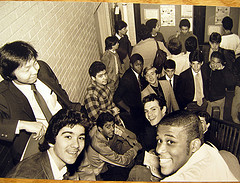
La Salle Students,1980
The heart of the Lasallian message, “Touching Hearts,” has become a way of life for many current and former faculty of La Salle. In 1997 La Salle Academy sought and received Middle States Accreditation for the first time in its history. This was soon followed in 2000 by receiving recognition as a National Blue Ribbon School of Excellence.
The Present
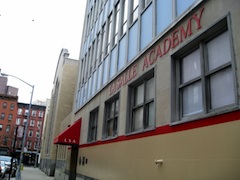
La Salle Academy, 2010
The reduced number of Brothers, a gradual and normal change in student profile and family background, the demise of the Catholic Primary Schools, traditionally feeder schools to La Salle, the gentrification of the Lower East Side, and the current national demographic dip, with a corresponding reduced student applicant pool, created significant challenges to the survival of La Salle Academy. As the new millennium dawned, La Salle was struggling with financial stability and maintaining balanced budgets. In 2008 the first lay President of La Salle Academy was hired by the Board of Trustees, but shortly thereafter the financial collapse of 2008 threatened to end the 160 year old tradition of the school. The President and the Board of Trustees engaged in a strategic planning process in order to identify new financial structures and avoid the looming school closure.
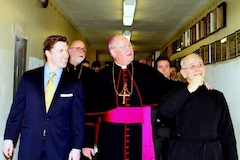
Archbishop Dolan Touring La Salle, 2011
Through a series of coordinated actions La Salle Academy relocated its student body from Second Street to occupy a significant portion of St. George Academy, a Ukrainian Catholic school a 5 minute walk away on Sixth Street. La Salle leased two large floors of the building and maintained its own identity. Both schools remained independent but shared a gymnasium and refectory. Simultaneously, the school and the Brothers residence on 2nd Street were leased to a for-profit private school. The leveraging of the property provided an annual income stream that allowed La Salle Academy to retire its debts and move the issue of deferred maintenance of its buildings to a third party. La Salle maintained control of the Annex on 2nd Street and constructed a new Brothers residence on the top two floors and developed the lower section for the President’s office, Finance office, the Development and Alumni offices, and a variety of other student and alumni uses.
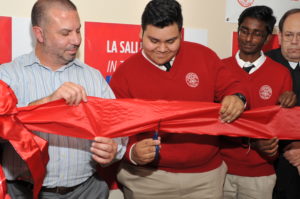
La Salle Academy hosts a ribbon-cutting ceremony to commemorate the expansion to a third floor (2017).
In summer 2017, La Salle Academy increased its school space to a full one-third more capacity, populating the 3rd, 4th, and 5th floors of its school building.
In spring 2020, the sale of property owned by the Catholic Archdiocese of New York on 2nd Avenue that once housed Nativity church and rectory greatly enhanced the marketability and value of the Annex property, which is adjacent to those parcels. Days after the Nativity sale, the developer expressed interest in purchasing the Annex.
The building served La Salle well for fifty-four years, but was not vital to the daily operation and was in need of significant repairs.
After several weeks of negotiations, the leadership of the Brothers, working with representation from the Executive Committee of La Salle Academy’s Board of Trustees, approved the sale of the Annex.
The offices once housed in the Annex were moved to the school building at 215 East 6th Street. The Brothers’ Community moved to a nearby location.
The proceeds from the sale of the Annex will provide much needed financial resources for La Salle Academy as well as relocating costs for the Brothers’ Community. With this move, the school’s fiscal viability will be significantly enhanced!

